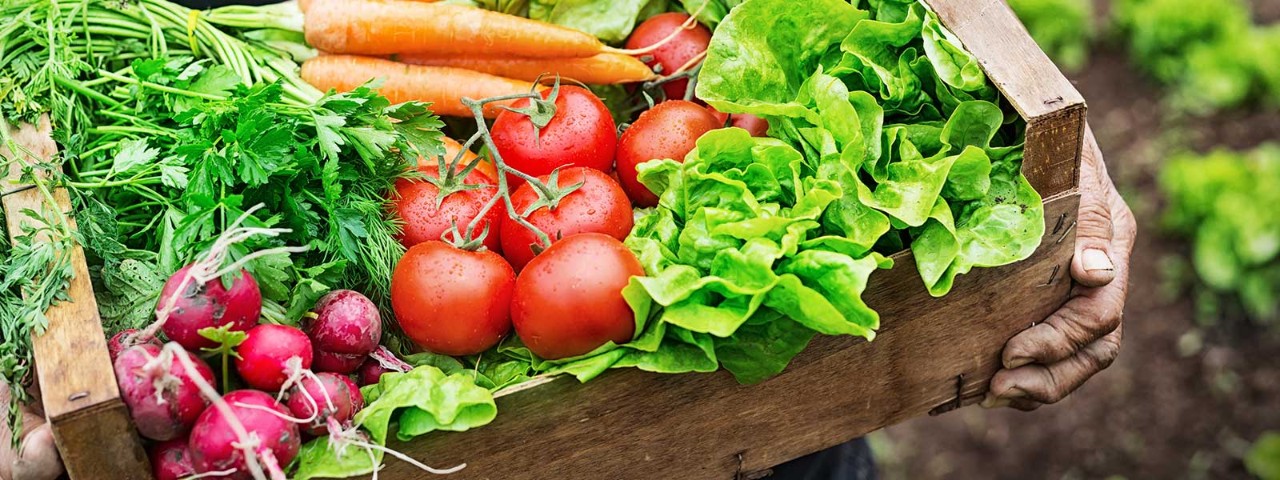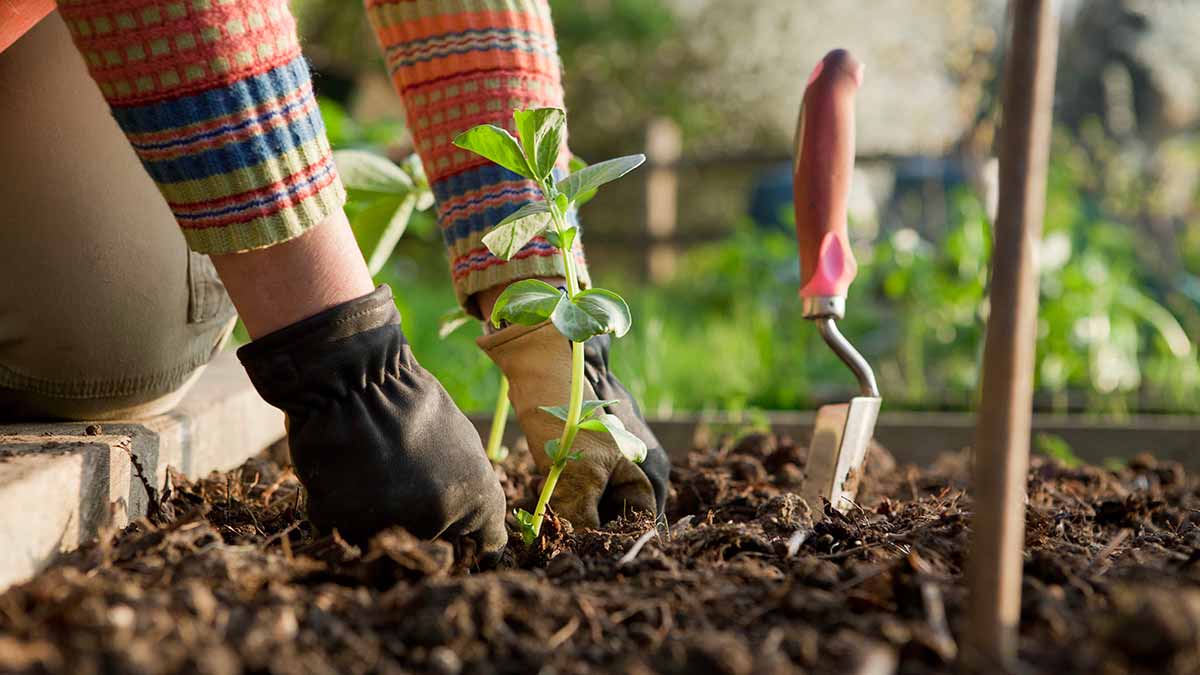Regular tree trimming is essential for tree health and property safety. Here's what you need to know about trimming and pruning your trees, especially before storm season.
Beginner's guide on how to start a vegetable garden

Whether you live in a house, townhouse or apartment, becoming a green thumb is easy with this guide to starting a vegetable garden.
Health, taste and cost savings are just some of the biggest motivating factors for households to grow their own food.
The idea that gardening is ‘good for the mind and the soul’ and the sheer enjoyment that comes with creating food from scratch are also great reasons for starting a vegetable garden.
So, if you've never had a veggie patch but like the idea of harvesting fresh food from your own backyard - here are some tips to consider.
Jump to: Seasonal Calendar - when to grow and harvest vegetables
Vegetable gardening for beginners
What and when to plant in your vegetable garden
Take the the time to choose vegtables that work best for when you get started - from gardens to start in autumn to the best herbs to grow in winter.
Great vegetables that grow year-round include tomatoes, peppers, eggplant, squash, kale, and certain onions. For those wanting to start a vegetable garden in an apartment or smaller dwelling, consider potted plants such as rocket, spring onion, beans, peas, or radishes. You can even grow a vegetable garden from food scraps.
Herbs such as parsley, mint, chives, and oregano are the perfect way to start off small, and once established are a cost-effective way to the boost the flavours in your home-cooked meals. As a general rule, the more sun your herbs get, the more flavour and scent they will have.
For a monthly, year-round guide, see our handy table below.
Where to grow a vegetable garden at home
The best place for a vegetable garden is on level ground, or slightly elevated.
You need to consider the aspect of your vegetable garden and how much exposure it will have to sun and rain. It is best to avoid areas where buildings or fences block the sun for most of the day.
“The best veggie patches have good sun exposure – so have a northerly or westerly aspect,” says Richard Rowe, Training and Learning Coordinator at Sustainable Gardening Australia.
“Fruiting vegetables, like tomatoes, cucumbers and summer crops, need at least eight hours of sunlight a day. If you have a smaller courtyard and not as much sun, you can still have a veggie garden, but you’ll do better with root vegetables and leafy vegetables like lettuce, silverbeet, spinach, peas, carrots, parsnips, and radishes. They won’t grow as quickly but you will have a reasonable crop.”
Doing the groundwork
Soil is just as important as location. Whether your soil is clay, sandy or loamy, add animal manure or compost before planting.
“It’s the key to bringing your veggie garden to life – it feeds the life within the soil,” says Rowe. Organic materials like manure should be mixed in gently with the soil to releases nutrients and retain moisture, helping your vegetables grow.
If your soil contains clay, Rowe recommends adding some gypsum (available at local hardware stores and nurseries) to break down the heavy clay structure.
Raised garden beds offer better water retention in areas that have sandy soil and better drainage in areas with clay soils, but you may face the added cost of extra bags of potting soil and compost to fill the bed up.

Add animal manure or compost to your soil before planting. Image: Getty
Managing the weather
Most veggies love sun, advises Rowe, but you’ll need to take extra care of your vegetable garden during periods of prolonged heat. On days of 40 degrees-plus, you need to shade your vegetables and plants from the sun.
“Use a shade cloth or buy a couple of white cotton sheets from an op shop and use those to shield your veggies from the sun,” Rowe says. Remove the cloth or sheets once the heat wave is over.
Lettuce and herbs such as parsley, lemon blams and mint require less sun and can be planted in areas that experience some shade during the day.
In colder months, put a cloth over potato plants if the weather is likely to drop to zero degrees or below at night. Frost burns the leaves of potato plants and will ruin your crop. If you are growing plants up a trellis, secure them firmly to prevent damage on windy days.
How to deal with pests in your vegetable garden
Besides weather, pests can turn your newly curated vegetable garden from delicious to deflating.
If pests are a concern, try controlling them with natural rather than chemical methods, as chemicals can affect microscopic life in the soil as well.
To get started, use barriers such as netting and snail traps, and remove bugs and snails by hand.
Rowe says parents can involve their children by giving them a magnifying glass to hunt for bugs and rewarding them for every snail they find, as a way of making pest management fun.
He also advises against leaving items around your vegetable patch.
“Don’t leave piles of wood or rubbish around the garden bed because it becomes a hotel for pests to live in. And bring good bugs into the garden to fight off the bad bugs.” Good bugs include pollinators like bees and butterflies, and predators like ladybugs and praying mantids.
The most common mistakes
Short bursts of enthusiasm
You might be enthusiastic when you build and plant your veggie patch, but that dedication has to be maintained for results. “It requires regular attention. If you plant and then don’t look at your vegetable garden for a week or two, the snails and pests will have wiped out your seedlings,” says Rowe.
Not watering plants enough
Water thoroughly and regularly. Consider making it a ritual at the same time every day. Early morning or late afternoon are best, as the water evaporates quickly in the midday sun. If you have children, equip them with a watering can, and they can be part of the process. If you get bored, listen to a podcast.
Alternatively, consider a drip irrigation system. The water goes directly into the soil and prevents the leaves suffering fungal diseases.
Picking vegetables too soon
Pick your vegetables when they are ripe for more flavour. “At the supermarket, veggies are picked early and ripen as they travel to stores, so don’t have as much flavour,” says Rowe.
| Vegetable | ||
|---|---|---|
|
Asparagus |
Aug-Nov |
Apr-May |
|
Beetroot |
Oct-Jan |
Dec- April |
|
Broad beans |
Aug-Sep |
Dec-Feb |
|
Broccoli |
Nov-Dec |
Jul-Aug |
|
Cabbage |
Jul-Oct |
Jan-May |
|
Cauliflower |
Mar-May |
Aug-Sep |
|
Carrots |
Sep-Jan |
Dec-May |
|
Climbing beans |
Oct-Feb |
Jan-Apr |
|
Cucumbers |
Aug-Nov |
Jan-Mar |
|
Eggplant |
Jul-Sep |
Jan-Mar |
|
Garlic |
Sep-Oct |
Feb-Apr |
|
Leek |
Sep-Oct |
Mar-Aug |
|
Lettuce |
Sep-Feb |
Feb-May |
|
Onions |
Sep-Oct |
Feb-Apr |
|
Parsnips |
Sep-Oct |
Feb-Apr |
|
Peas |
Oct-Jan |
Dec-Apr |
|
Potatoes |
Sep-Oct |
Dec-Mar |
|
Radishes |
Sep-Mar |
Nov-May |
|
Spinach |
Sep-Dec |
Dec-Apr |
|
Squash |
Sep-Nov |
Jan-Apr |
|
Sweet corn |
Oct-Dec |
Feb-Mar |
|
Tomatoes |
Oct-Nov |
Feb-Apr |
|
Zucchinis |
Sep-Nov |
Jan-Apr |


